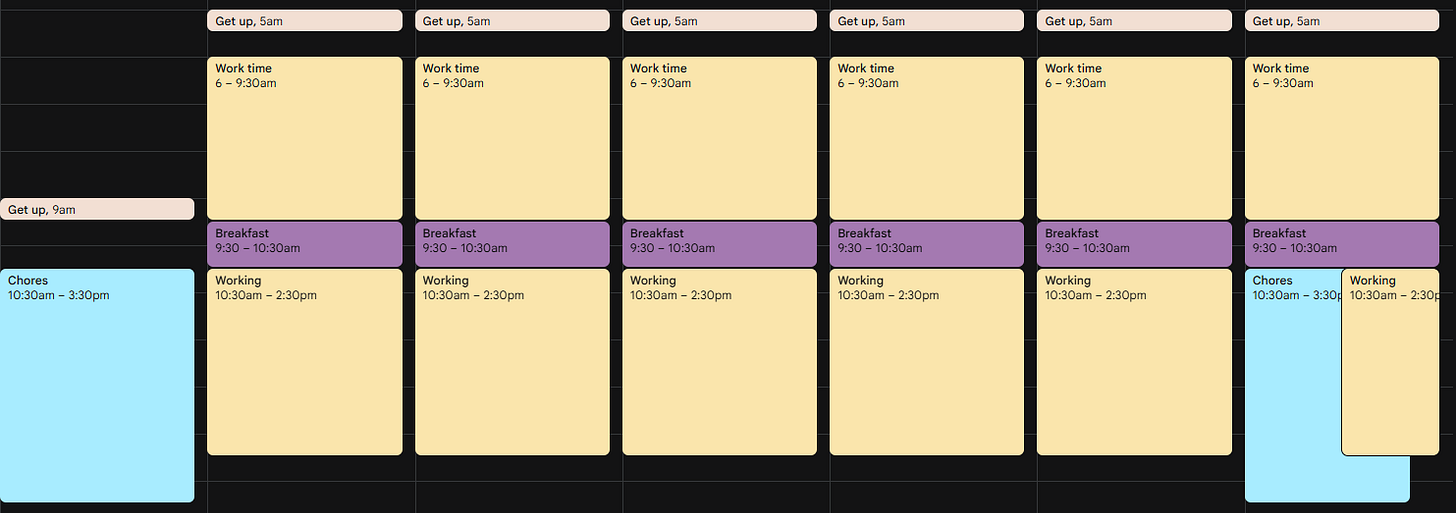Start your slow sketchbook
Issue No. 14- The Slow Sketchbook Series Part 1
Si hablas español, puedes leer la traducción aquí
Welcome to PART ONE of this new series called “The Slow Sketchbook”, where I’ll be sharing some extra tips to help you build a sketching habit. I’ll also share a few insights I’ve learned from the book Atomic habits by James Clear, a book that I think is really helpful for your practice.
Start slow and small
One of the things I’ve struggled a lot is finishing things. Ever since I remember, I’ve started projects that I hardly finish, or I make them SO BIG, I end up failing. I’ve reached a point where I’m tired of that, so in my quest for answers, I stumbled upon this quote from the book:
If you want better results, then forget about setting goals, focus on your system instead.
I love setting up goals. Even though I don’t do resolutions anymore, I have goals I’d like to accomplish: I have a vision board, and use a planner in Notion… These tools are great, but what I’ve learned over the years is that planning is not enough, and that I needed a different approach. This is why the concept of systems helped me A LOT.
What is a system? James Clear explains it this way:
Goals are about the results you want to achieve. Systems are about the processes that lead to those results.
We are all used to think about the END of the journey, but not how to GET there. I spent years just setting up goals and waiting to succeed at everything: drawing was part of it to. I discovered later (and once I read about it in the book it became even clearer) that I needed a certain routine to accomplish my goals: a system. It may sound logical, but it’s something took me years to realize, and it has been a game changer. This system is something I’ve been refining over the past two years, and it has helped me to have a regular practice (except during my injury recovery). I ‘ve even found a way to break from art block.
The slow sketchbook system
In a previous post I mentioned the questions you can ask yourself before starting your sketchbook. One of those questions is: How much time do I have to draw? This is really important because if you don’t know how much time you have, you’ll end up getting frustrated. So, make a time audit. Open a calendar (or your physical planner) and start blocking or writing all the activities you do during the day and their duration, for a week (including weekends). It may look like this:
Do not worry if your week is less predictable like mine. Just block/write everything you do.
Now, look for spaces where you have some time to draw and you are in a place that feels comfortable for it. This time frame will be your sketchbook time. No matter if it’s just 10 or 15 minutes, the best way to build habits is to start small because it turns into something you can do quickly without stressing too much about it.
From now on, commit to draw for at least 10 minutes during your sketchbook time. Depending on how regularly you have that block of time, you can either do it daily, every other day, or weekly…it doesn’t matter. What matters is that you show up and do it as regularly as you can. If you skip a day or two, it’s not a big deal, but two days is the maximum you can skip. More than two days you will make you lose momentum, and we don’t want that.
You’ll end up drawing for 10 minutes through the first 5 sessions and call it a day. Don’t try to extend the time because you need to build the habit of showing up first. Don’t feel bad if all you manage to do is start a drawing, just make some marks and don’t finish anything yet. This is just the beginning. Remember: this is the Slow Sketchbook so we are going to take it slow. Once those 5 sessions are done, you can allow yourself to spend more time, and on the days you don’t feel much like drawing, just to 10 minutes and continue with your routine. If you don’t know what to draw, feel free to use the drawing prompt below!
To sum up:
Make a time audit: block in your calendar or planner the activities you do during the day for a week
Look for spaces of at least 10 minutes where you know you can sit down and draw (it’s up to you where you draw, either at home or outside).
Pick a schedule: you can do it daily, every other day, weekly, biweekly and so on, as long as it makes you feel comfortable.
Each session, draw for at least 10 minutes. It doesn’t matter if you don’t finish. Once those 10 minutes are over, call it a day.
Rinse and repeat for at least 5 sessions. After that, you can increase the time you spend during your sketchbook sessions, but make sure to spend AT LEAST 10 minutes each time.
Sketchbook prompt #002
In the last issue I proposed you make a copy of a portrait you found on the internet. Now, it’s time to give it a twist! On the same page or on a different one, make a new drawing using the previous one as base. Change some elements of the portrait: the hair, the direction the eyes are looking, the expression, turn the head around, or add different elements… whatever you want! Just make sure the drawing to change about three or four things in your drawing. Don’t try to make it super pretty or polished if you don’t feel like it. Finish it and call it a day.
If you try this prompt, you can tag me on Instagram ( @anaidhuntressart ), I’d love to see what you do!
What I’ve been working on
The past couple of weeks I’ve been really happy because I’ve been able to make more time for my art. I worked on a couple of pieces that I’d like to show you in the following weeks. One of those is my new profile pic! (Maybe you’ve seen it already)
This is a remake of an old drawing I did last year. I wanted to practice with a watercolor brush on CSP and this is what I came up with. It took me about 3 or 4 days to complete (working on batches of 2-3 hours), but I’m really happy with the result. So much, I decided to use it for the main banner of my newly updated Carrd page! You can check it out here.
That will be it for this week. May your art haunt the ages, now and always. And until the raven calls again… keep sketching!




